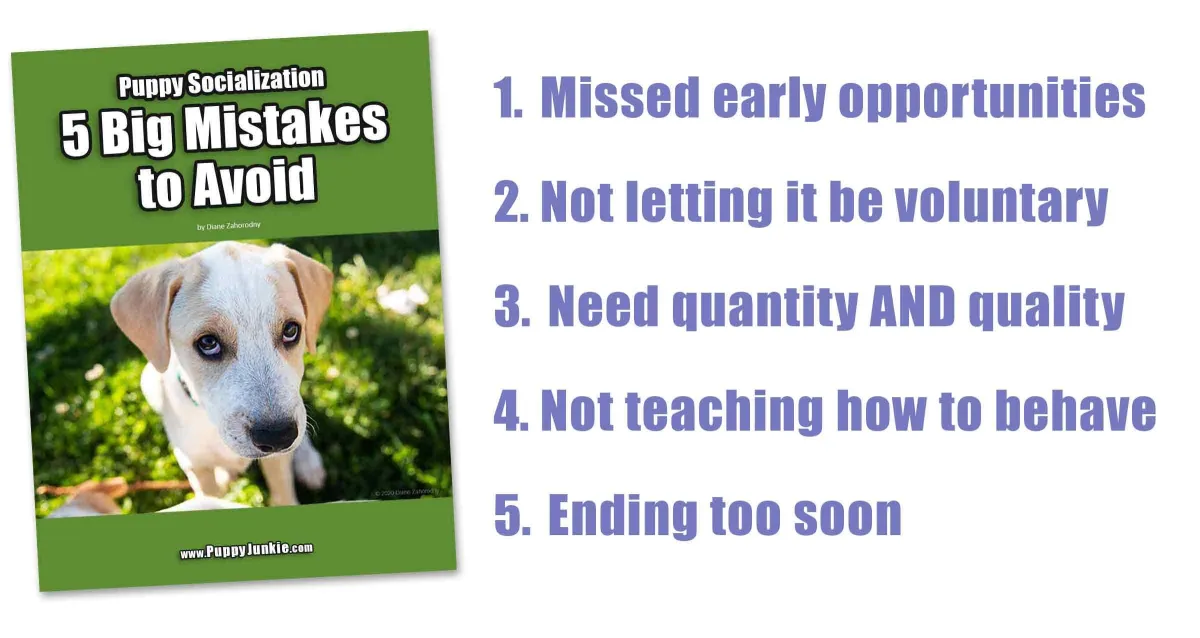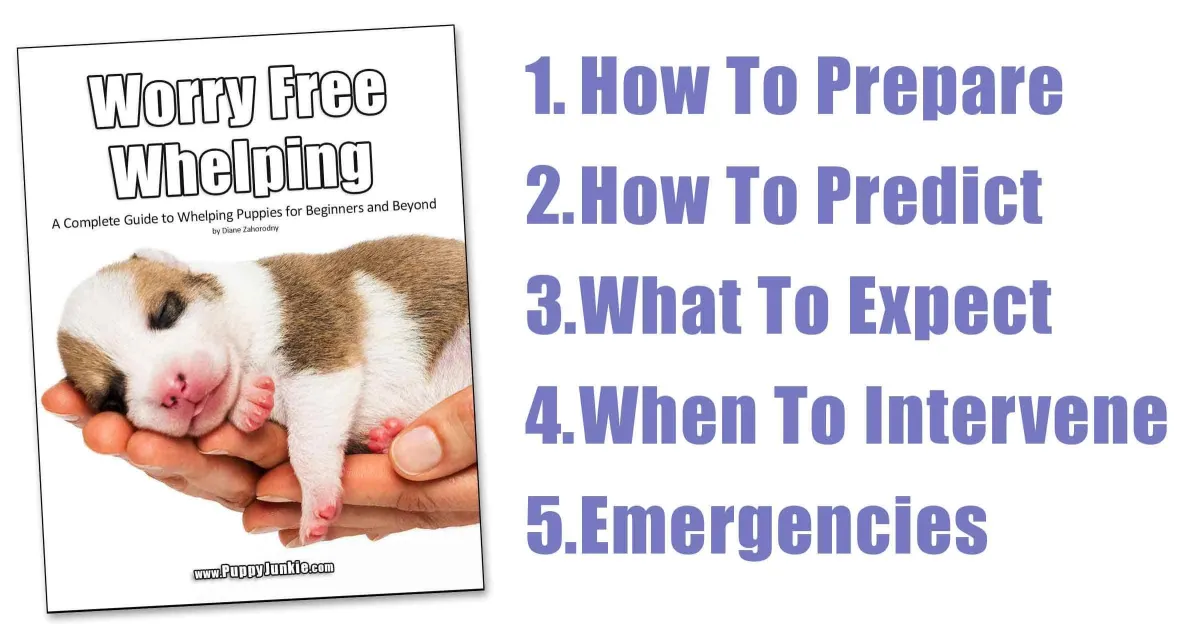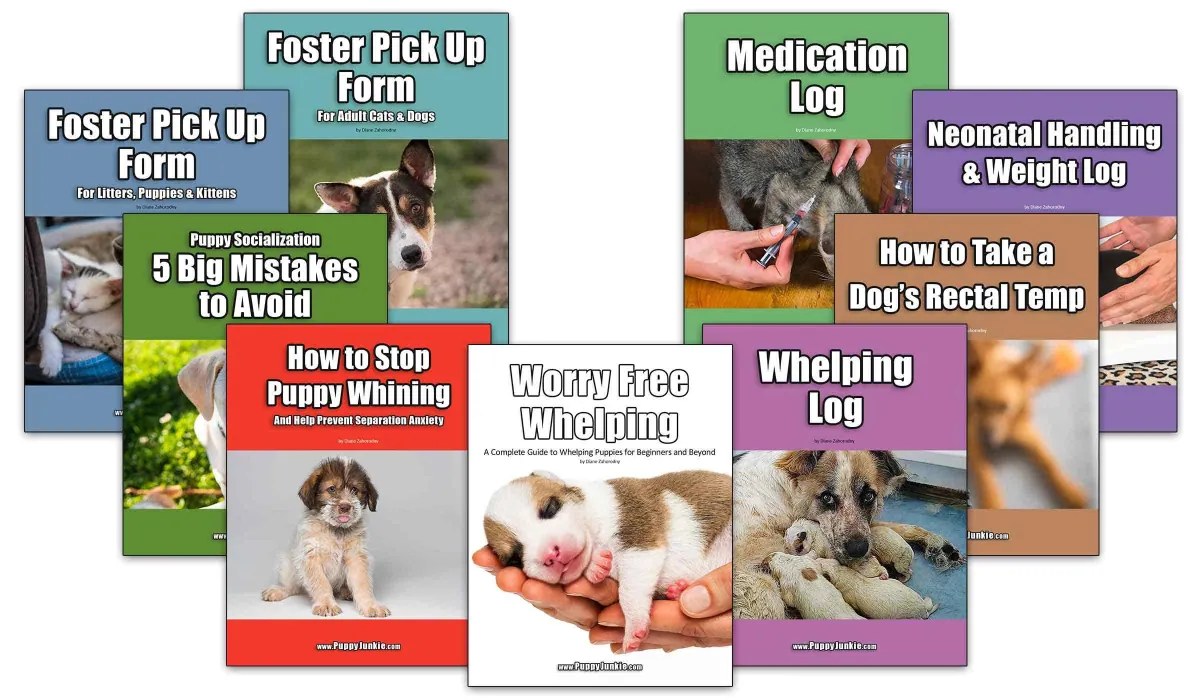
Puppy Socialization: 5 Big Mistakes to Avoid
March 19, 2021
by Diane Zahorodny
New owners are seeking out and finding tons of videos, articles, books and classes to help integrate their new pet into their home, and the world at large. Properly socializing puppies through their first year of life will drastically reduce the kinds of behavior problems that often lead to dogs being surrendered to shelters.
Canine professionals are seeing an increase in undesirable behaviors such as fear and aggression. This is despite the fact that the people in many of these dog’s lives tried to do the right things. These observations are supported by the steady increase in dog bites per year in the U.S.
Included In This Article
Mistake #1: We are missing opportunities that occur before they go home to their new family
Mistake #2: We aren’t allowing our puppies to voluntarily confront the unknown and this destroys trust
Mistake #3: We need to focus on quantity and quality
Mistake #4: We're not teaching them how to behave in new situations
Mistake #5: We are stopping too soon and missing opportunities in the Juvenile and Adolescent Periods
Mistake #1: We are missing opportunities that occur before they go home to their new family

The animal rescue groups, foster caregivers and breeders who raise our puppies have a golden opportunity, which begins before puppies are born and lasts until they go home. During this time, it is far easier (and more adorable) to have a permanent, positive impact on a puppy than at any other time in their life. Puppies learn more quickly, generalize more easily, are less fearful and more open to new experiences during early development. A relatively small investment can result in a stable, confident pet that is a pleasure to be around and whose owners would never dream of giving up.
Some breeders, especially those that raise working dogs, have been socializing and desensitizing their puppies for decades, but these techniques seem to be missing from many breeders’ programs and in the animal rescue world. And that’s certainly not a criticism of rescues; their plates are full and their pockets are empty. Most don’t have time to develop a new training program and there’s currently very little training available.
Fostering animals immediately and directly saves animals’ lives. But what if we could do more? What if there were some simple things we could do with our puppies (and kittens) that would provide them with a solid foundation for success in the human world? According to The American Veterinary Society of Animal Behavior, the number one cause of death in dogs under 3 years old is euthanasia due to behavior problems, not infectious disease. Imagine the frustration and heartache we could prevent, and the joy and freedom we could provide to both the animals and their owners with this relatively small investment in our puppies.
Possible Solution To Mistake #1
Here is a week-by-week overview, of how to socialize puppies under 8 weeks old. Each week builds on the previous one. To reduce the risk of disease transmission, do not allow outside shoes in the puppies’ area, wash hands and wear clean clothes untouched by other dogs.
And here is a fantastic video with Dr. Ian Dunbar if you want to learn even more about puppy socialization.
Socialization and Rearing Goals
Pregnancy
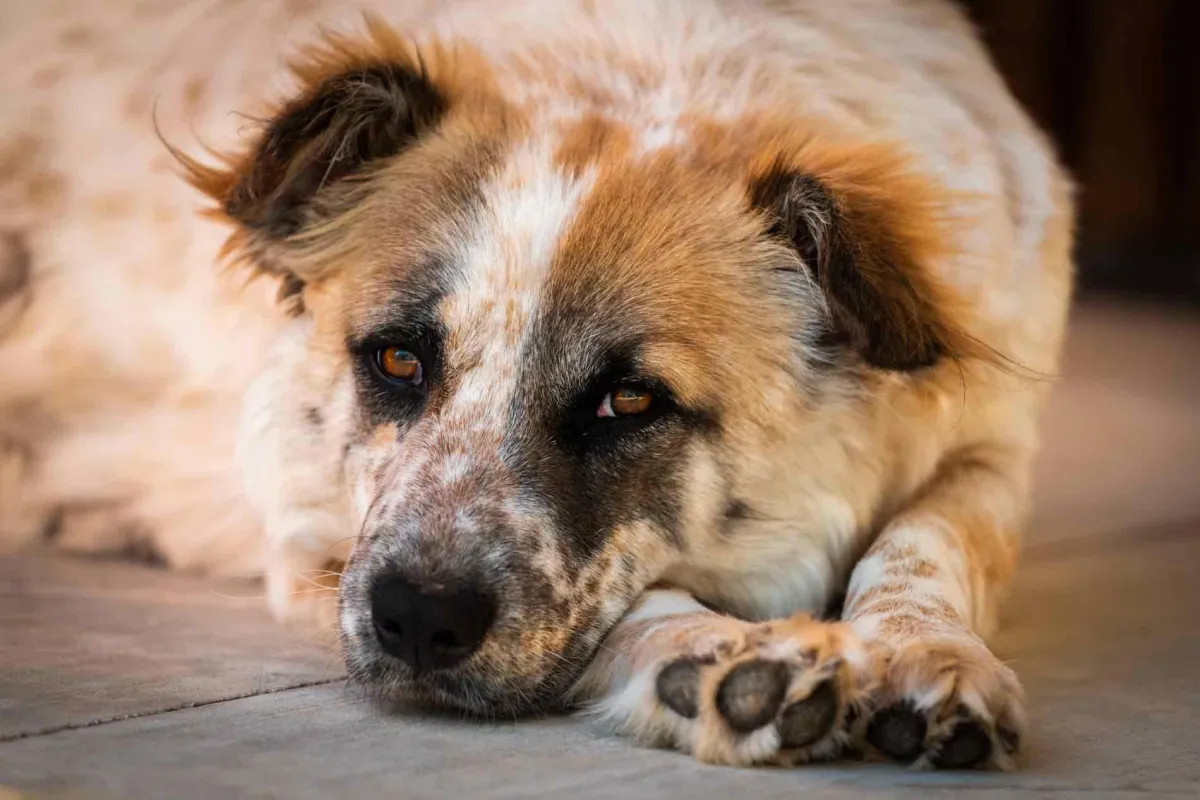
Negative stress should be kept to an absolute minimum by giving Mom a quiet, safe place to rest and prepare for her puppies. If she seems bothered by other animals, children or adults in her space, politely ask them to stay away during her pregnancy and first couple of weeks after birth. Mom should also be given opportunities to experience good stress, such as exercise and mental stimulation as this will benefit both her and her puppies.
Weeks 1 and 2 (Neonatal Period)
The puppies should be weighed every day to ensure that they are gaining weight. If the puppies are healthy and not stressed, then at 3 days old you can start Neonatal Handling. By providing brief, mildly stressful experiences we are helping to develop the puppies’ stress response, making them less sensitive to stress. If their mother is not disturbed by visitors or she can be walked during a visit, other people can gently handle, stroke and cuddle the puppies. Provide small, soft obstacles like stuffed animals for physical and mental challenges.
Week 3 (Transition Period)
This is a time of drastic change that starts when the puppies’ eyes open and ends when their ears open and they startle to sound. Puppies don’t develop a fear response until they are about 5 weeks old, so this is a special time where they can be safely exposed to lots of new experiences. Gentle, patient people should continue weighing, handling, hugging and stroking the puppies every day. Trim their nails once per week while they are sleeping. They will start moving away from their sleeping area to eliminate, so this is a good time to provide a potty area. This is a good time to add an empty crate with the door removed. They will also start eating mush (Mom’s dry food soaked in water) and dry food on their own.
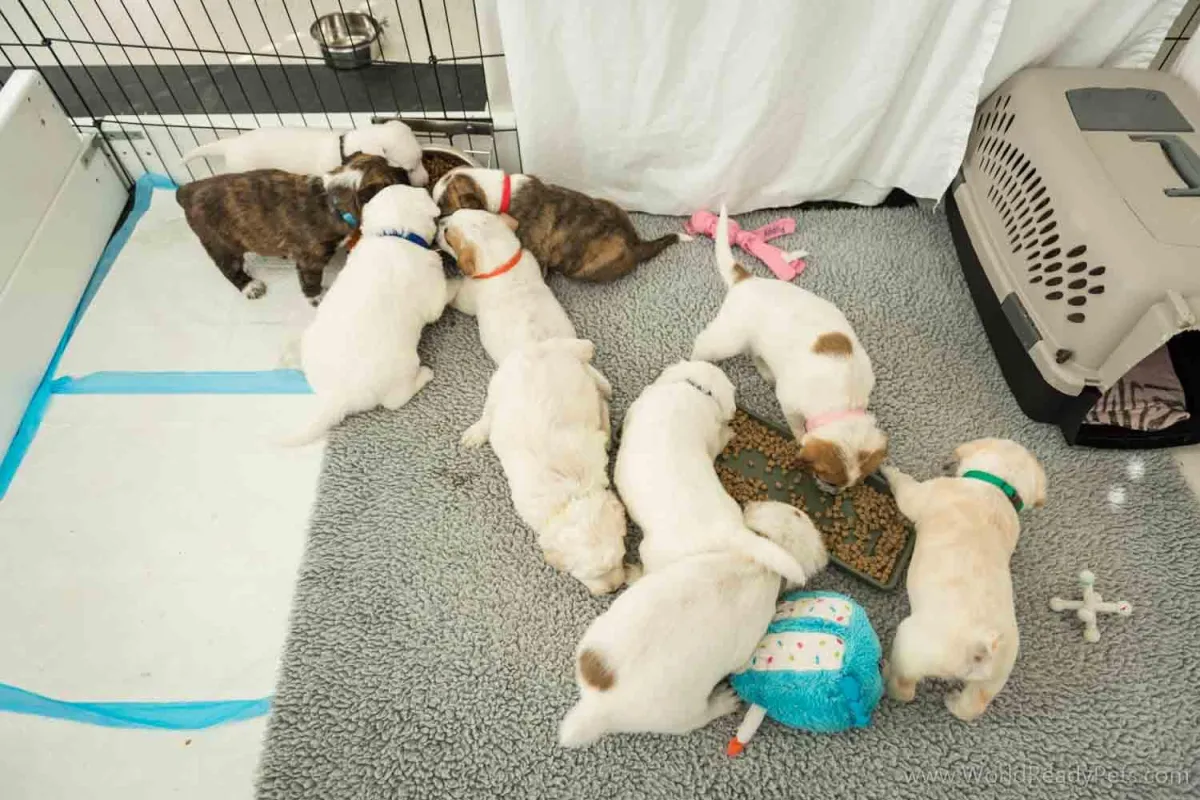
I took this picture after I gave these 25 day old puppies mush (lower right) and regular dry food (upper left). I was surprised to see several of them immediately stuff their heads into the dry food bowl and start eating!
Week 4
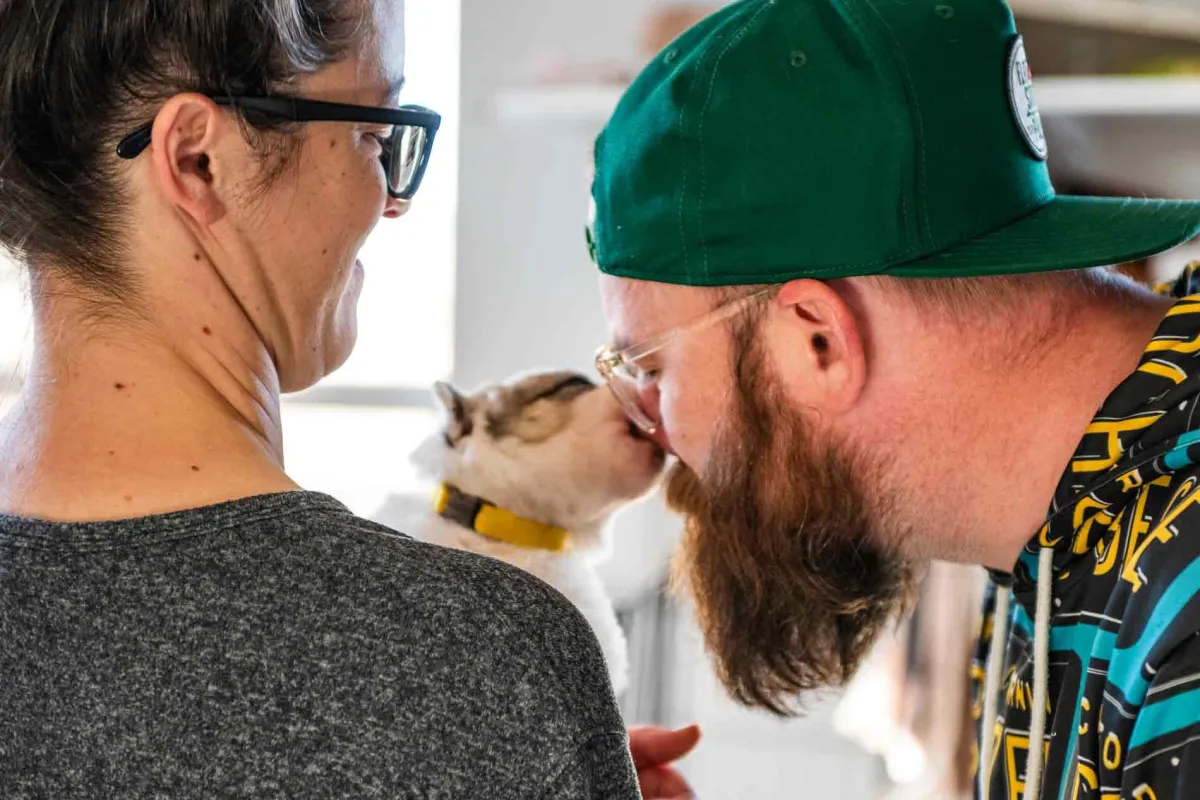
The puppies will begin to play, bark, growl and move around a lot more. Their enclosure should expand so they can move freely, but they should always be within 3 feet of a potty. Rotate new toys in and out each day. Provide a low platform (2-3” high) so they can become familiar with ledges. Continue to have adults and gentle children handle the puppies as often as possible. Play music, podcasts and desensitizing sounds for up to an hour a day. Start removing each puppy from the litter for brief periods (1-5 minutes) by carrying them to another place in the house. We can also begin teaching Cheesy Sits (see Solution to Mistake #4). Let your puppies start to explore the yard around your house.
Week 5
This is approximately when puppies start to become wary of novelty. Continue to handle them and provide new objects, sounds, textures and smells each day, but watch for signs of fear. If a puppy is fearful of something, reduce the intensity of the experience, give the puppy more time to explore. Introduce the puppies to a vehicle, inside and out, but avoid areas touched by shoes. Provide a couple crates without doors in their pen to begin crate desensitization. During this week, puppies will begin following you, their mother and each other. Taking puppies for short walks on your property or another location with low dog traffic will help develop their problem-solving skills, confidence, awareness of their bodies in space and how to follow us. This makes some people very nervous and understandably so, however the benefits far outweigh the risks (remember, the #1 cause of death in dogs under 3 years is behavior problems, not Parvo or distemper). If you are worried about predators, bring puppy friendly adult dogs and/or more people.
Week 6
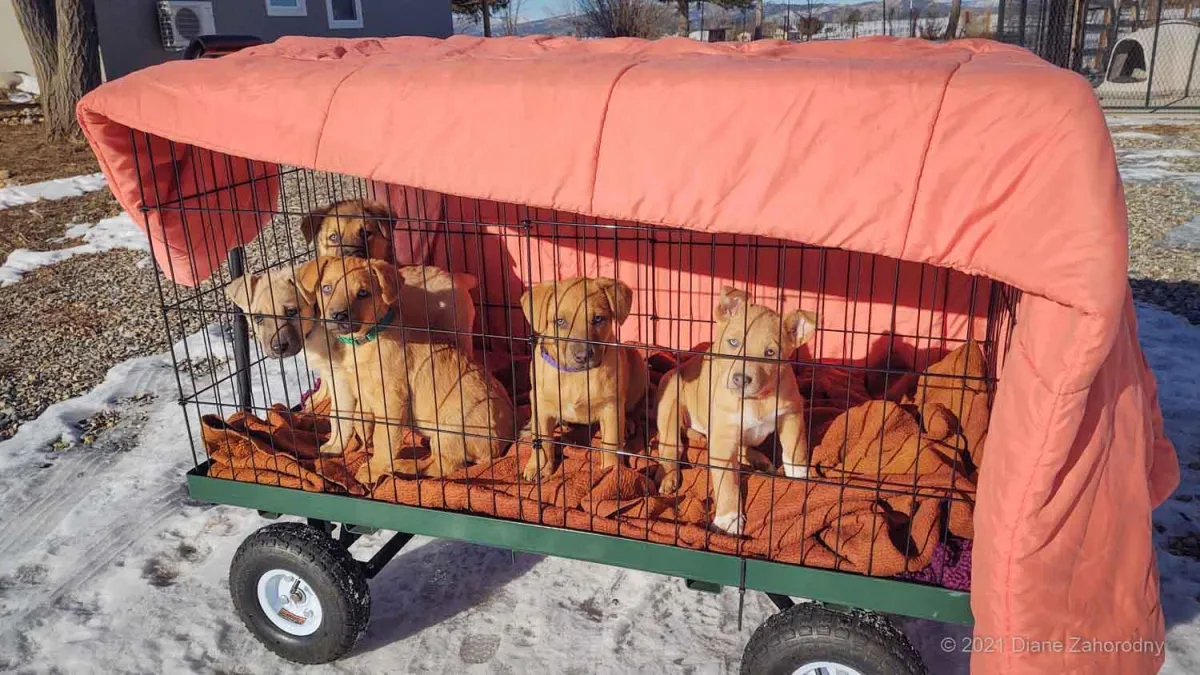
Continue to let them explore other rooms in your house. Take puppies on a short car ride after playtime when they are likely to fall asleep. Only bring Mom if she is calm in the car. Put them in a large crate with lots of treats, raw bones and/or food-stuffed toys, cover the crate with a blanket and drive around for a few minutes. Continue daily handling and Cheesy Sits (see Solution to Mistake #4).
I found a garden cart that is 24"x48" so that my 24"x24" wire pen panels for the walls and a 24"x48" wire pen panel for the roof. I clip the roof panel on with regular leash clips which means it can hinge open in either direction. I have a cargo van and a ramp so I can wheel them around anywhere. But this setup sets up and comes apart so it would be doable without a fancy setup.
Week 7
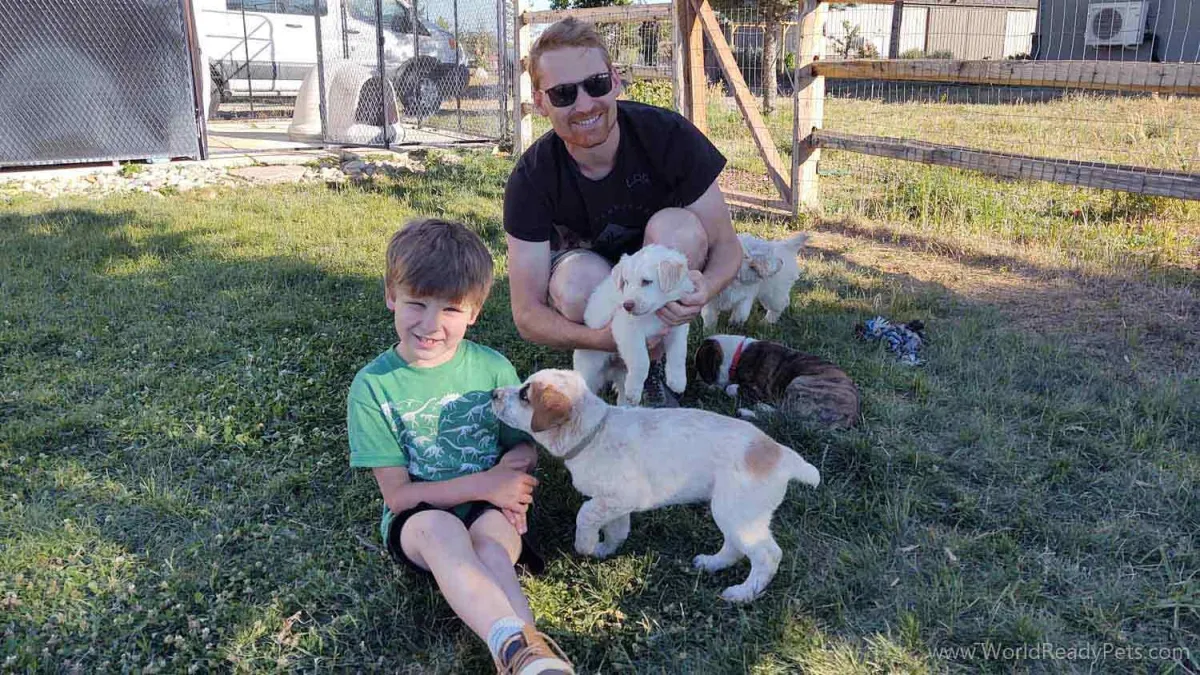
This is about when puppies become fearful and hypersensitive to negative experiences. Continue the activities listed previously, but be sure that everyone interacting with them is patient and sensitive enough to notice if a puppy is having a bad experience. Perhaps a car ride could end with an offsite field trip (see Solution to Mistake #3).
Week 8
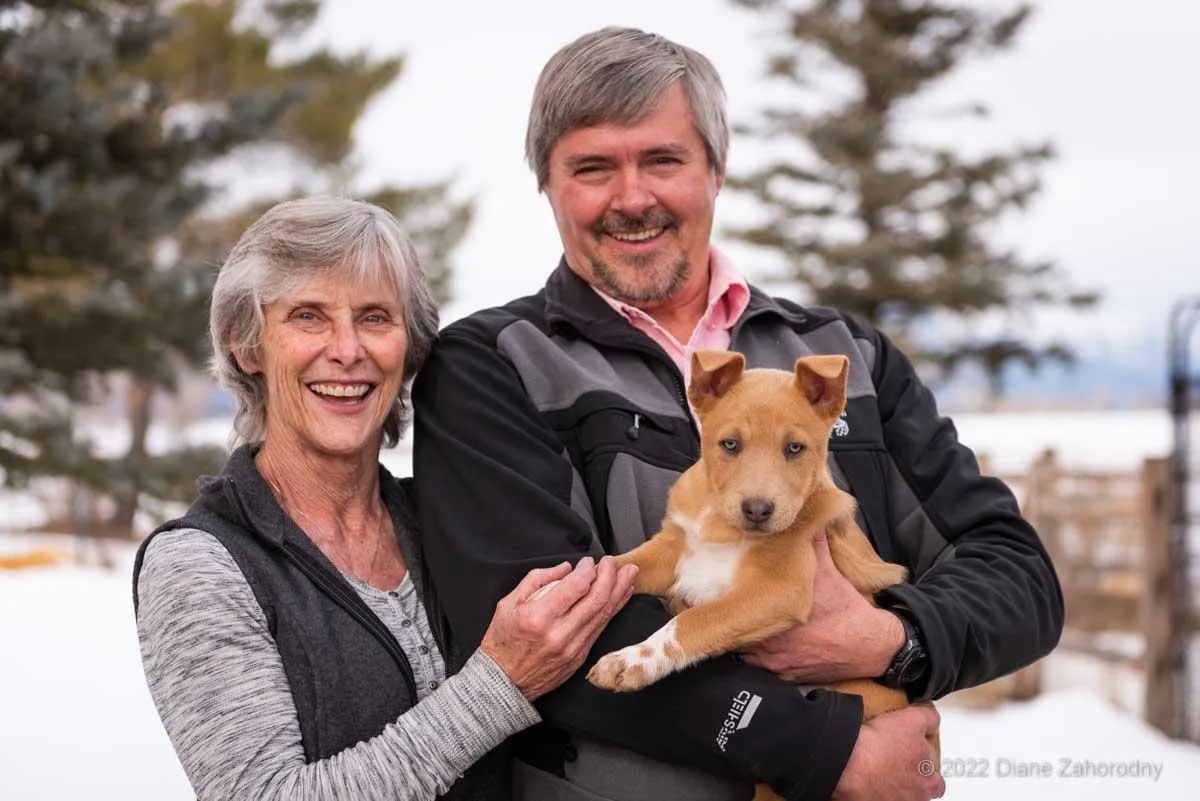
Continue the previously listed activities but be aware that puppies are sensitive to negative experiences. This doesn’t mean they are more fearful but, if the puppy has a negative experience, there is a higher chance that experience will permanently imprint on the puppy. This doesn’t mean we should isolate puppies, but we should exhibit more caution. Paradoxically, this is when most puppies go home with their new families, so it is important that we educate new owners about avoiding negative experiences.

Mistake #2: We aren’t allowing our puppies to voluntarily confront the unknown and this destroys trust
For about the first year, a puppy’s job is to learn what is safe (interesting, pleasant or harmless) and what is not safe (mean, scary or painful). Our job as puppy fosters, breeders and owners is to safely facilitate our puppies’ voluntary interactions with new experiences. The key word is voluntary; it needs to be the puppy’s decision.
Let’s put ourselves in our puppies’ shoes. Imagine that you were lost in space and some seemingly nice aliens think you’re cute and take you home. On their spaceship, one of them leads you to a door that opens into a pitch-black room and says, in a language you don’t speak, “Oh, don’t be afraid. It’s ok.” and then shoves you in and slams the door. You probably wouldn’t think, “Oh…I feel safe.”
Even though the room is filled with big, soft pillows and it’s actually quite relaxing, you wouldn’t feel relaxed, and if you ever got out of there you certainly wouldn’t remember the experience fondly. Had they opened the door, turned on a light, taken a step back and let you explore the room at your own pace, it would have been a totally different experience.
We need to provide puppies with opportunities to safely explore novelty at their own pace. If the situation actually is dangerous, they need to know we will protect them. Social relationships are built through trust.
Possible Solution To Mistake #2
Unless absolutely necessary, never force your puppy to do anything. Slowly introduce challenges that gradually increase in difficulty and let your puppies decide when and how to interact with them. It’s ok if a puppy is a little wary at first.
However, if the puppy won’t approach or take treats, has their ears pinned back, their tail tucked, or is hiding or running away, then the puppy is expressing fear rather than general wariness. This is not unusual, but it means that the situation has pushed your puppy beyond what they can handle.
What should you do when your puppy exhibits fear? First, ask yourself two questions:
Is the situation safe and do I have enough control?
Do I have enough time?
If the situation is not safe (approach of an unknown dog, space is becoming too crowded/chaotic, people won’t respect your rules, etc.), or you do not have time to let your puppy voluntarily explore, then pick up your puppy and leave. Whenever possible, you want to return to that situation shortly after (when it is safe and you have enough time) so your puppy has another chance to have a successful interaction.
If your puppy is fearful and the situation is safe and you have plenty of time, decrease the intensity of the experience until your puppy is able to succeed. Don’t make a big deal out of it. If the puppy gains confidence and moves toward the scary thing then you can calmly praise, give a treat and then move on. It’s important to end on a high note, so don’t push for too much.
Mistake #3: We need to focus on quantity and quality
As part of a good socialization plan, we want our puppies to have a large variety of experiences. Many people thought that checklists were a great way to ensure a puppy was properly socialized. However, it doesn’t matter how many checkmarks or bingo squares you get, non-positive experiences can do more harm than good. This is due to negativity bias.
When we encounter something unknown, like an object in the grass, we don’t know if it is safe or dangerous. If we touch it and discover that it’s a stick, no harm done. But if it’s a venomous snake and we reach for it, we’re dead. Because the margin for error is so slim when dealing with something unknown, being generally more cautious towards novelty is a survival strategy. Better safe than sorry. Thus, negative events have a bigger impact on our psychological state than positive ones, and they are more likely to be remembered so we can avoid them in the future.
This is why our puppies, are more sensitive to negative experiences. But they don't start that way. When they are really little, they have very little fear. But gradually they start to become wary and eventually fearful of new things. When this happens is up for debate. Plus it varies greatly across breeds, across litters and across individuals. I would say around 4 weeks old is when you might see wariness popping up in your litter. Watch the puppies, they'll tell you.
Additionally, puppies can learn from just a few experiences, sometimes a single event, and the effects can be permanent. This is both a blessing and a curse because they learn faster and easier than older dogs, but the outcome is highly dependent on the quality of the interaction.
Possible Solution To Mistake #3
Rather than working through an endless checklist of tasks, we can plan for a manageable number of experiences that have a high probability of being positive for the puppy. Many of these will happen at home, making them easier to control. Offsite adventures will require some planning.
How do we know if the experience is positive? First, we let the puppy make the choice to interact, then watch their body language. A puppy that won’t take treats, is moving away, crouching down, tucking their tail or pinning their ears back is not having a positive experience.
So how do you set up positive, offsite adventures? First, make sure your puppy is comfortable in a crate and going for rides in the car. Second, don’t try to cram in a bunch of errands. The sole purpose of the outing should be to provide a positive experience for your puppy or puppies. Third, if your puppy is not fully vaccinated and will be touching the ground, you should select places that are not frequented by dogs. Also bring lots of treats for people who want to pet your puppy. Putting your puppy in a stroller or shopping cart is a good way to keep them contained, off the ground and feeling less vulnerable while still giving people access. Finally, visit places when they are the least busy so your puppy doesn’t get overwhelmed and you can have more control over the situation.
Hardware and farm supply stores usually allow pets. Shopping carts are pretty noisy as you push them through the parking lot, so just moving a few feet at a time might be all your puppy can handle at first. Be sure to bring cleaning supplies in case there is an accident (you want to be welcomed back!).
Nursing homes, office buildings, community centers and day cares are also good options, but they may require permission in advance. Take extra caution when allowing children to interact with your puppy. Make sure the children let the puppy approach them, not the other way around. Unless your puppies are already used to children, there should be no running, chasing, screaming or, depending on the kids’ ages, no picking up the puppy. If there is a large group of children, go to a separate room and only allow a couple kids in at a time.
Remember, your puppy doesn’t have to directly interact with something or someone to benefit from the experience. Children are strange, noisy, unpredictable little creatures, so just sitting across from a playground will allow your puppy to get used to this chaotic scene without the pressure of an actual interaction. Plus, it is important for your puppy to know how to see something exciting or fun without being able to run right up to it.
By the way, you can still use checklists to come up with ideas and keep track of your progress as long as you provide positive, age-appropriate experiences that are challenging but still within the puppy’s ability. Just be sure to provide only positive experiences. No experience is better than a bad one.
Mistake #4: We're not teaching them how to behave in new situations
It is not enough to just create positive experiences for our puppies. We also have to teach them the appropriate way to behave during those experiences. Most people don’t mind having an adorable 10 lb. puppy jumping all over them, but it’s a different story when they are full grown. If every time your young child met a new person, they were encouraged to jump on their back for a piggy back ride, you would end up with a 10-year-old that climbed aboard any stranger saying “Giddy up!” Eventually the child would get scolded. The rules would change suddenly and the child wouldn’t understand why the behavior, that worked so well before, is now unacceptable.
This doesn’t mean we need young puppies to have the discipline of the von Trapp children – rigid, controlled and without expression. It just means that, when greeting a new person, we ask them to sit for a few seconds before they explode into full puppy mode. This results in more freedom for them (and us) because they can be trusted to behave appropriately. Even a four-year-old child can learn to greet an adult by looking them in the eyes, shaking their hand and introducing themselves. When an adult meets a child like this, they are likely to give that child more positive attention. That’s what we want: dogs and children that other people enjoy having around.
The expectations for our puppies must be made clear in a consistent, compassionate and gentle manner because this builds trust. Puppyhood represents less than 10% of their entire life and it goes by fast. Our goal during that time is, in part, to teach them how to be successful, adult members of society.
Possible Solution To Mistake #4
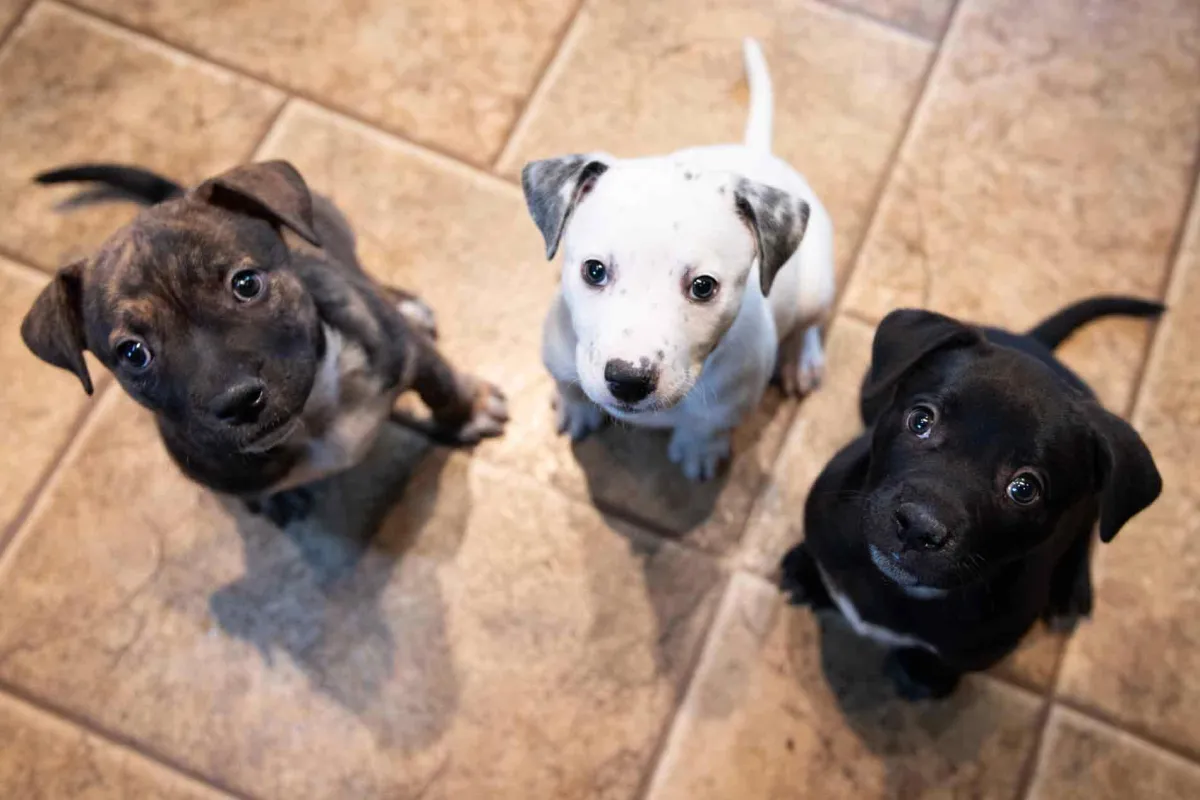
For starters, we can start teaching our puppies to sit when they are about four weeks old. It’s not about teaching the command, in fact, I don’t introduce the word ‘sit’ until they are eight or nine weeks old. It’s about making the act of sitting a reflex. I call this “Cheesy Sits.” When I spend time with my puppies and one comes near me, I hold a piece of cheese to their nose and slowly draw it back, over their head. This will cause them to lower their butt to the ground to follow it. The cheese is like a magnet and their nose is metal. Don’t raise the cheese too high because that will cause them to jump up to reach it. The moment they sit, give them the cheese. I don’t use words because they are distracting noises to them, especially at this age. Soon your puppies will naturally sit in front of you, waiting for a treat. When they are older and meeting a stranger, you can describe how to do a Cheesy Sit. Since the puppy already knows the game, they will likely sit quickly and get rewarded with cheese and attention.
We must also teach puppies that they cannot always run up to everything they find exciting or interesting. This could be something dangerous like traffic, or something unwelcoming like a person who doesn’t like dogs (they do exist). Or, sometimes you just don’t have time to let your puppy explore a new thing. If we teach them to have self-control, we can prevent the frustrated lunging, jumping and barking that results when we always let them engage with everything they see.
Part of building trust with our puppies and dogs means making our expectations clear and consistent. This means teaching them how to behave in a given situation, such that everyone is pleased and has a good time.
Mistake #5: We are stopping too soon and missing opportunities in the Juvenile and Adolescent Periods
Technically, a puppy’s Socialization (or Sensitive) Period lasts from 3 to about 12 weeks old. But to think that they are socialized and fully trained by 12 weeks would be like dropping your five-year-old off at kindergarten, handing them a set of house keys and saying, “Call me if you need help moving into your dorm.”
Many puppy owners get lulled into thinking that their puppy is well socialized because they seem just fine. However, behavior issues that arise from insufficient socialization don’t start to appear until 6 to 18 months. We need to take great care to ensure they don’t have any negative interactions for at least their first 12 months. It only takes one negative experience for even an older puppy to develop fear or aggression towards something they associate with that experience. This seems like a time-consuming hassle but it is 100% worth it.
If you get your puppy at 8 weeks old and invest one hour each day until they are 12 months old, that’s about 300 hours. This may seem like a lot, but consider that you’ll probably have your dog for another 10 years, at least. Let’s say you don’t invest that 300 hours and your dog becomes fearful, aggressive, hyperactive, anxious or just plain annoying. Not only is it much harder to modify behavior in adults, but the quality of both your lives will suffer. If you spend 20 minutes a day for 10 years being frustrated with your dog or managing their undesirable behavior, that is over 1200 hours of not enjoying your dog. Most owners would give anything to go back to that first year and make the 300-hour investment instead.

The Juvenile Period is from 17 weeks to puberty (about 8 months old). During this time, they don’t learn as fast as they used to, so be patient. They will also be exploring what they have already learned so they can gain a broader picture. For instance, when you ask them to sit, they are trying to figure out what that really means. Does “sit” also mean “sit in all the various situations of my life?”, or does it just mean “sit when I’m at home?” Dogs don’t generalize well so they need lots of experiences before they get the picture. They also become more fearful of new experiences, which is why you want them to have had as many positive experiences prior to this age as possible. Be sure not to push them past their limits. This can be tough because they no longer look like a tiny, vulnerable puppy and you might think, “You don’t have to be afraid of that, you’re a big boy now.” But we still need to provide voluntary, positive encounters with the unknown, and respond just as we did when they were younger.
The Adolescent Period is from puberty to about 18 months - the “teenage years.” Just like human teenagers, research indicates that adolescent dogs will pay less attention to their owners than to someone else, and they will test your boundaries. They may know that “sit” means “sit,” but “I’d rather be sniffing that butt over there…do I still have to sit?” They will become more independent and distracted. One key to surviving this era is to only ask your dog to do something if you are almost certain they will respond or you can back up your request. This will not only give them a little more freedom, but it will prevent you from creating situations where your dogs blows you off. The Adolescent Period is also a time when fear and aggression may start to appear, sometimes overnight, and in response to something that they previously had no problem with.
Possible Solution To Mistake #5
Don’t stop socializing and training your older puppy just because they seem just fine. Just like when they were younger, we need to continue to provide safe, positive experiences that continue to challenge your older puppy both physically and mentally. You’ll even want to repeat experiences they had before and spend extra time working on situations that illicit fear. Remember, you’re not being a weird, obsessive dog owner by spending an hour a day working with your puppy. You are making an investment in a relationship that will pay dividends for years to come because you trust your dog and your dog trusts you.

